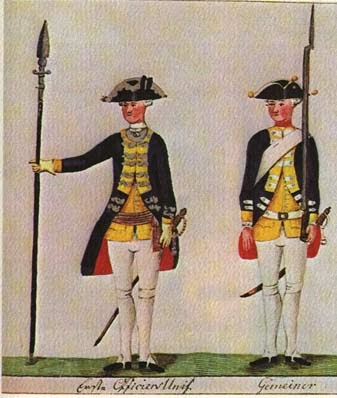Asenath was born 20 May 1851 in Andover, Maine.1 She was the fifth child of Nahum Alonzo Rand and Dolly C. Brister, and the first to be born in Maine (the earlier children were born in Roxbury, Massachusetts). She appeared as 10-year-old "Acenith" M. Rand in the 1860 census,2 and then... nothing. She's not in the Rand household in 1870,3 and there were no records in Maine of her marriage or death. For some time I simply assumed she had died before the 1870 census at a time when death records were sketchy.
 |
| 1860 U.S. census, Andover, Maine, "Naam" Rand household |
 |
| 1870 U.S. census, Andover, Maine, Naham Rand household |
And yet... in general, the Rand family members who died in Maine, like Kate and Sam and Annie, are all buried in Andover's Woodlawn Cemetery. But not Asenath. Maybe she did marry after all? Or maybe she died somewhere else? I had to know. More marriage records are coming online all the time, but a search on Ancestry.com and FamilySearch turned up no sign of wedding bells for Asenath. So I decided to hunt for a death record between 1860 and 1870.
Ancestry.com had an index entry for an "Aseneth M Rand," single, age 20, who died 3 Mar 1871 – in Philadelphia! Now that actually sounded promising, because Asenath's older brother Ezra Davis Rand was also missing from the 1870 census in Andover, but was likely the "David Rand" enumerated in Philadelphia that year in the John Milliken household; Ezra married in Philly in 1872 and lived there until about 1878 before returning to Maine. Still, Asenath was not with that David Rand in 1870, so I couldn't be sure this was "my" Asenath M. Rand.
The Ancestry database was just an index to a FamilySearch collection, so I turned there and found the actual death certificate.4 According to this certificate, "Asenith," who died of consumption and was buried in the Odd Fellows Cemetery, was born in Philadelphia. Not a good sign, but death certificates are only secondary sources of birth information (and no informant is listed), so I reserved judgment. Unfortunately, parents' names were required only for minors, so no help there. The only other possibly useful piece of information was an address (presumably her residence), 19th Ward, "cor. Amber & Dauphin." But no Rands were listed in the Philadelphia 1870 or 1871 city directory on either street, and John Milliken lived on Germantown Avenue, so there was no apparent connection there.
Well, clearly there was an Asenath M. Rand in Philadelphia in early 1871, so I searched for her in the 1870 census. How about "Matilda Rand," age 19, born Pennsylvania, in the household of one Edward Rhodes, 19th Ward?5 A quick lookup in the 1870 city directory reveals his address as "501 E Dauphin" – and the street index reveals that the intersection of East Dauphin and Amber is at #501!6 So "Matilda Rand" is undoubtedly the "Asenith M. Rand" who died in 1871 – but is she "my" Asenath Matilda? How was she linked to the Rhodes family?
 |
| 1870 U.S. census, Philadelphia, Penn., Edward Rhodes household |
  |
| 1870 Philadelphia City Directory, Edward Rhodes antry and East Dauphin street index |
The census record listed Edward's 25-year-old wife, Elizabeth, as being born in Maine. And Asenath had a sister, Sarah Elizabeth, born in 1845 – and who married an Edward Rhodes in 1865.7 (Granted she was actually born in Roxbury, Massachusetts, but she had lived in Maine since about age 5, so it's not surprising that an informant might have thought she was born there; she may even have thought she was born there.) So this is indeed "my" Asenath Matilda, supposed Pennsylvania birthplaces notwithstanding, and now I know why she isn't buried in Woodlawn. One more "missing sister" laid to rest.
(Note: This post is in response to Amy Johnson Crow's "52 Ancestors in 52 Weeks" challenge at No Story Too Small.)
SOURCES
- Phyllis Spaulding and Elaine Morton, trans., “Andover Births and Deaths from 1795 to 1891”, transcriptions (1998), Robert A. Spidell, Andover, Maine (http://www.andovermaine.com : accessed 3 Jun 2012), "Asenath Metilda Rand" birth, 1851; citing the original Vital Records, Andover, Maine.
- 1860 U.S. Census, Oxford County, Maine, Andover, p. 67, dwelling 492, family 491, “Naam” Rand household; database and digital images, ProQuest, HeritageQuest Online (access through participating libraries : accessed 12 Mar 2012).
- 1870 U.S. Census, Oxford County, Maine, Andover, p. 11, dwelling 66, family 69, Naham Rand household; database and digital images, ProQuest, HeritageQuest Online (access through participating libraries : accessed 11 Mar 2012).
- “Pennsylvania, Philadelphia City Death Certificates, 1803-1915,” index and digital images, FamilySearch (https://familysearch.org : accessed 23 Feb 2014), Aseneth M. Rand, 1871.
- 1870 U.S. Census, Philadelphia County, Pennsylvania, 60th Division (Philadelphia), p. 94, dwelling 677, family 728, Edward Rhodes household; digital image, Ancestry.com (http://search.ancestry.com : accessed 23 Feb 2014).
- Gopsill's Philadelphia City Directory for 1870 (Philadelphia: James Gopsill, 1870), p. 1275, entry for “Rhodes Edward, shoemaker” and p. 46, East Dauphin; database and digital images, “U.S. City Directories, 1821-1989,” Ancestry.com (http://search.ancestry.com : accessed 23 Feb 2014).
- Langdon Brown Parsons, History of the town of Rye, New Hampshire: from its discovery and settlement to December 31, 1903 (Concord, N.H.: Rumford Printing Company, 1905), p. 508; digital images, Google Books (http://books.google.com/books : accessed 28 Apr 2012).






